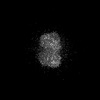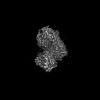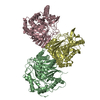+Search query
-Structure paper
| Title | Formation of the Diketopiperazine Moiety by a Distinct Condensation-Like Domain in Hangtaimycin Biosynthesis. |
|---|---|
| Journal, issue, pages | Angew Chem Int Ed Engl, Vol. 64, Issue 20, Page e202421950, Year 2025 |
| Publish date | May 12, 2025 |
 Authors Authors | Qing Mei / Shijuan Wu / Minghe Luo / Shunjia Ji / Jiayi Guo / Chuan Dong / Guo Sun / Jian Wang / Zixin Deng / Yi-Lei Zhao / Zhengyu Zhang / Yuhui Sun /  |
| PubMed Abstract | Non-ribosomal peptide synthetases (NRPSs) are key enzymes in pharmaceutical synthesis, with condensation (C) domains catalyzing amide bond formation between aminoacyl substrates. However, recent ...Non-ribosomal peptide synthetases (NRPSs) are key enzymes in pharmaceutical synthesis, with condensation (C) domains catalyzing amide bond formation between aminoacyl substrates. However, recent research has elucidated that the catalytic capabilities of C domains extend beyond the traditional formation of peptide bonds. In this study, we elucidate the cyclization mechanism of the NRPS-derived natural products hangtaimycin (HTM), characterized by the formation of a 2,5-diketopiperazine (DKP) moiety which involves an intramolecular vinylamide-mediated nucleophilic attack instead of an N-terminal amino group. This cyclization is catalyzed by a terminal condensation-like (C) domain within the NRPS enzyme HtmB2. We investigated the evolutionary specificity of the HtmB2-C within Streptomyces spectabilis CCTCC M2017417. Employing a multidisciplinary analytical approach, we have delineated the molecular underpinnings of DKP formation within the HTM biosynthesis. This process is facilitated by residue R2776, which modulates the formation of reactive species and stabilizes the amidate through electrostatic interactions. Besides, we found a positive correlation between the alkaline strength of the residue at position 2776 and the activity of HtmB2-C. Our study elucidates the formation mechanism of DKPs in NRPS-derived natural products, thereby bridging a critical gap in the structural and mechanistic understanding of this field. |
 External links External links |  Angew Chem Int Ed Engl / Angew Chem Int Ed Engl /  PubMed:40000413 PubMed:40000413 |
| Methods | EM (single particle) |
| Resolution | 2.53 - 2.61 Å |
| Structure data | EMDB-39711, PDB-8z0q: EMDB-39713, PDB-8z0r: EMDB-39714, PDB-8z0s: |
| Source |
|
 Keywords Keywords | BIOSYNTHETIC PROTEIN / Dimer of special condensation domain of NRPS / tetramer of special condensation domain of NRPS |
 Movie
Movie Controller
Controller Structure viewers
Structure viewers About Yorodumi Papers
About Yorodumi Papers









 streptomyces (bacteria)
streptomyces (bacteria)